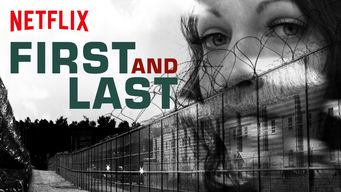One of Netflix’s newest documentary series, First and Last, opens in Gwinnett County Jail, a large, pretrial detention center outside Lawrenceville, Georgia. The complex is about a million square feet and home to between 35,000 and 37,000 inmates.
Snapshots of inmates in their bunks, dealing with violence, on the floor, crying and screaming flash across the screen. Viewers are getting a raw inside look at an American jail.
In each episode, filmmakers feature a group of inmates on either their first or last day in jail. Both groups have fascinating stories to tell and put a face to the inconceivable number of incarcerated individuals in the United States.
During introduction scenes, viewers watch angry newbies screaming, crying or venting their frustrations. These scenes contrast and balance the cheerful words of wisdom offered by older, more experienced inmates, and display the complexity of emotions within the criminal justice system.
In the series opener, viewers meet Velma, a pale-skinned, tattooed woman of 31, awaiting her release.
“I’ve been here six times,” she says. “I don’t want to be here no more. That’s for sure.”
While Velma’s interview lacks the drama found in interviews with new inmates, her story — one of addiction and abuse — is touching. By episode’s end, viewers have learned her background, her upbringing, and have watched her reunion with her son.
In this episode, audience also meets Alex, a young man arrested with two other men during a traffic stop. Alex, who claims to have been in “the wrong place at the wrong time,” is a frail, charismatic teenager who has a close relationship with his mother. He’s seen far too much violence on the streets of Atlanta, including watching his brother die on his doorstep, but he intends to rise above it and attend college.
Viewers watch as Alex is demonized by two older men, who attempt to force him to “take his charge” since he’s young and it’s his first offense. The altercation lends depth to the intricacy of crime and social hierarchy in America. By the end of the episode, viewers feel sympathy for Alex, and are left questioning where he’ll end up next.
First and Lasts also highlights intricate social problems. In episode two, viewers meet Keith, a man whose charisma and spunk steals the hearts of audiences. Doing time for a failed drug screening, Keith is sweet and self-conscious.
“I’m glad I … controlled my emotions,” he says. “I don’t want to mess up my hopes and dreams because I am a musician. I never forget that.”
The series portrays Keith as an underdog. He’s been belittled in jail for his soft voice and feminine mannerisms. Keith’s story is one of bullying and authenticity, one that many American children can relate to.
First and Last excels at conveying these raw, emotional interactions and conversations. During interviews, inmates cry and laugh, or, in some cases, admit guilt. Through it all, each story is told with care and affection.
The series takes aim at our hidden tendency to outcast, target and stereotype those who have been incarcerated, and through expert storytelling and raw emotional interviews, it effectively breaks this social tendency.



